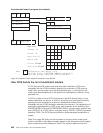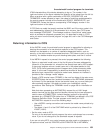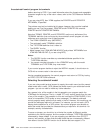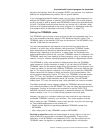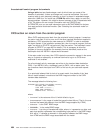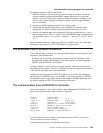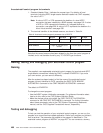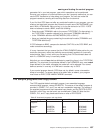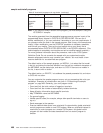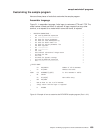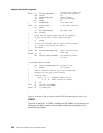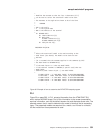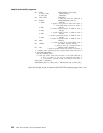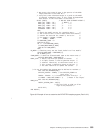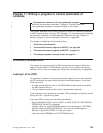
Table 25. Autoinstall programs and copy books (continued)
Language Member name Alias Library
Copy books:
Assembler
COBOL
PL/I
C/370
DFHTCUDS
DFHTCUDO
DFHTCUDP
DFHTCUDH
None
DFHTCUDS
DFHTCUDS
DFHTCUDS
SDFHMAC
SDFHCOB
SDFHPL1
SDFHC370
Note: If you use the COBOL version of the program, you must compile it using the
VS COBOL II compiler.
The module generated from the assembler-language source program is part of the
pregenerated library shipped in CICSTS13.CICS.SDFHLOAD. You can use it
without modification, or you can customize it according to your own requirements. If
you choose to alter the code in the sample program, take a copy of the sample and
modify it. After modification, use the DFHEITAL procedure to translate, assemble,
and link-edit your module. Then put the load module into a user library that is
concatenated before CICSTS13.CICS.SDFHLOAD in the DFHRPL statement. (This
method applies to completely new modules as well as modified sample modules.)
For more guidance information about this procedure, refer to the
CICS System
Definition Guide
. Do not overwrite the sample with your customized module,
because subsequent service may overwrite your module. You must install a new
resource definition for a customized user program.
The default action of the sample program, on INSTALL, is to select the first model
in the list, and derive the terminal identifier from the last four nonblank characters of
the NETNAME, set the status byte, and return to CICS. If there are no models in
the list, it returns with no action.
The default action, on DELETE, is to address the passed parameter list, and return
to CICS with no action.
You can customize the sample program to carry out any processing that suits your
installation. Examples of customization are given in “Customizing the sample
program” on page 499. Generally, your user program could:
v Count and limit the total number of logged-on terminals.
v Count and limit the number of automatically installed terminals.
v Keep utilization information about specific terminals.
v Map TERMINAL name and NETNAME.
v Do general logging.
v Handle special cases (for example, always allow specific terminals or users to
log on).
v Send messages to the operator.
v Exercise network-wide control over autoinstall. A network-wide, global autoinstall
control program can reside on one CICS system. When an autoinstall request is
received by a control program on a remote CICS system, this global control
program can be invoked and data transferred from one control program to
another.
sample autoinstall programs
498
CICS TS for OS/390: CICS Customization Guide



